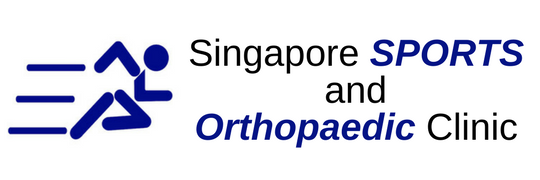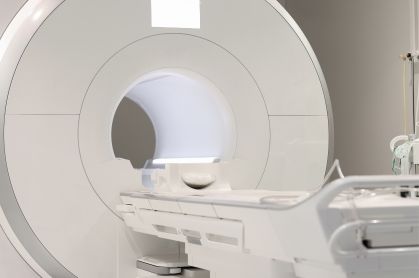What is Magnetic Resonance Imaging (MRI)?
Magnetic Resonance Imaging (MRI) is a medical imaging technique used in radiology to visualize detailed internal structures. MRI makes use of the property of Nuclear magnetic resonance (NMR) to image nuclei of atoms inside the body.
How to Prepare for MRI Examination?
- As the strong magnetic field used for MRI will pull on any ferromagnetic metal object implanted in the body, the patient must remove all metallic items, including magnetic strips (e.g., in bank or credit cards), before entering the scanning room. The presence of metal will also degrade the MRI image and, therefore, must be removed to optimise your examination.
- Surgical staples, plates, pins, and screws pose no risk during MRI if they have been in place for more than four to six weeks. An x-ray procedure may be required to verify the presence of any metal in your body or head.
- You are discouraged from applying makeup or sprays on your body or hair as these may contain metallic dust and affect the images.
- You will be asked to fill in a pre-examination questionnaire to ensure that no significant medical history is forgotten and that the staff is fully aware of any metal in your body.
- Unless a contrast injection is required, you may eat normally and go about your daily routine. Continue to take any medication prescribed by your doctor unless otherwise directed.
- If you are claustrophobic, the radiographer may require sedation. Please highlight this when making an appointment, and you will be given further instructions.
What to expect during an MRI exam
Before the examination, you will need to:
- Fill in a questionnaire on your medical history.
- Remove items like your wallet, watch, keys, and magnetic strip cards (e.g., ATM, credit cards). Lockers are provided.
- Change to a gown to prevent metallic objects from being attracted by the powerful magnet.
During the MRI
- You will be positioned on a padded table and slowly moved into an open magnet that surrounds the body with a magnetic field.
- Once you are comfortably positioned, it is essential that you remain relaxed and completely still during the scan. The movement will result in unclear images.
- You will hear faint knocking, intermittent humming, and thumping sounds. These sounds are the changes in the magnetic field. The radiographer will provide earplugs before the examination.
- Breathe normally, as nothing about the procedure makes you uncomfortable or painful. You may notice a warm feeling in the area under examination; this is normal, but if it bothers you, please let us know.
- In some cases, the doctor may order an image enhancement agent. This fluid is injected into a vein, probably in your arm. It does not mean your condition is more severe if this is required. So do not be concerned.
- You will always have voice contact with the radiographer, and can be seen clearly from the control room.
How long will it take?
The examination can take 30 to 45 minutes, depending on your doctor’s information.
How Safe is MRI?
MRI is relatively safe for the majority of patients. Certain patients may not be able to have an MRI. These include people who get nervous in small spaces (claustrophobic) and those with implanted medical devices such as aneurysm clips in the brain, heart pacemakers, and cochlear (inner ear) implants.
The radiographer may not scan people with pieces of metal near a vital organ (such as the eye). There are a few additional safety considerations and exceptions based on individual circumstances.
Also, particular metal objects that we commonly have on our persons, like watches, credit cards, hair pins, writing pens, etc., may be damaged by the MRI scanner or pulled away from our bodies if we go into an MRI room. Also, metal can sometimes cause poor pictures if it is close to the part being scanned. For these reasons, patients will be asked to remove these objects before entering the MRI scanner.
What will I Experience During MRI Examination?
You will likely lie on a unique table that moves into the magnet’s center. Before going into the magnet, you will be offered earplugs to reduce the noise you hear. You will hear some “hammering” noises while the scanner prepares to scan and take pictures.
During this hammering noise, it is essential not to move, as this would blur the pictures. You may also feel some vibration during the hammering noise and some slight movement of the table during the examination. Some patients will be given an injection in their arm of a substance that improves certain types of pictures. This substance, called a “contrast agent,” is very safe and is unrelated to the iodine used for CAT scans and kidney x-rays.
What are the Uses and Advantages of an MRI Scan and Other Types of Scans?
MRI scanners are good at looking at the non-bony parts or “soft tissues” of the body. In particular, the brain, spinal cord, and nerves are seen much more clearly with MRI than with regular x-rays and CAT scans. Also, muscles, ligaments, and tendons are seen quite well, so MRI scans are commonly used to look at knees and shoulders following injuries. An MRI scanner uses no x-rays or other radiation.
A disadvantage of MRI is its higher cost than a regular x-ray or CAT scan. Also, CAT scans are frequently better at looking at the bones than MRIs.
What are the Benefits and Risks?
Benefits:
- Images of the soft-tissue structures of the body, such as the meniscus, anterior cruciate ligament (ACL), lumbar discs, and ligaments, are more precise and more detailed than other imaging methods.
- MRI can help physicians evaluate the function and structure of many organs.
- The detail makes MRI an invaluable tool for the early diagnosis and evaluation of tumours.
- MRI contrast material is less likely to produce an allergic reaction than the iodine-based materials used for conventional investigation.
- MRI enables the detection of abnormalities that might be obscured by bone with other imaging methods.
- MRI provides a fast, non-invasive alternative to x-ray angiography for diagnosing problems in the knee and spine system.
- Patients can avoid radiation exposure.
Risks:
- An undetected metal implant may be affected by a strong magnetic field.
- MRI is generally evaded in the first 12 weeks of pregnancy. Doctors usually use other imaging methods, such as ultrasound, on pregnant women unless there is a solid medical reason to use MRI.
When can you expect the Result?
The MRI radiologist and radiographer will review the images during the scan to ensure they are clear. The radiologist will send the report to the orthopaedic doctor, Dr. Kevin Yip, who will discuss the scan results with you.
Summary
Magnetic Resonance Imaging (MRI) is a medical imaging technique used in radiology to visualize internal structures in a detailed manner. MRI uses Nuclear magnetic resonance (NMR) to picture nuclei of atoms inside the body. Preparation work before an MRI scan is hassle-free and mainly used for orthopaedic injuries.
It is effortless and without restrictions except for one thing – metallic objects. Patients cannot bring metallic objects into the MRI room, including metallic products they carry, such as jewelry and even metal implants in the body. If you have metal implants, you need to inform your doctor, who will advise you accordingly. It is also advisable to go for an MRI scan without makeup if you are a female. This is due to some cosmetics containing traces of metallic elements, which may interfere with the MRI scan.
You must also declare your medical history to the doctor before the MRI scan so that they will know what implants you have in your body and whether they could be metallic. The magnetic fields generated during an MRI scan are so strong that they can suck you toward the machine if there are just minute traces of metallic substances in your body.
Generally, you will need to arrive at the hospital around 30 minutes before the scan. This is to allow the ample staff time to start the registration process and perform some last-minute checks before sending you to the MRI room. You will be asked to change into a hospital gown free of metallic substances. You will then are interviewed and asked to verify your details by a technologist.
The MRI scan will take roughly 45 minutes on average, and you will be placed on a padded table and slowly moved into a large open magnet that will surround your entire body. The radiographer will provide you with an assistance handheld device that you should use if you feel any discomfort during the scan.
There will also be a speaker, which the technologist will use to talk to you. Once you are comfortable in the lying position, try to relax and keep still, as any movements will cause the images to be blurred, rendering the results inaccurate. You will hear lots of loud noises, and this is due to the changes in the magnetic field.
MRI is generally a safe process, but patients who are claustrophobic or those with metallic implants in crucial parts of their body are not allowed to undergo an MRI scan due to safety constraints.
Ready to book an appointment?
At the Singapore Sports and Orthopaedic Clinic, our orthopaedic specialists are ready to help you get back to the activities you know and love. Call us today for an appointment at +65 9734 3087 to get a professional assessment of your condition & start your journey toward a better life!







